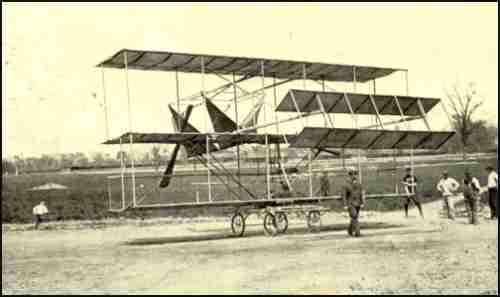| The Aeronautic Society of New York |
|
making the enterprise appear in the newspapers as a mere order just obtained by a concern just then formed, which concern, however, in truth, was not even thought of until weeks after the contract with Curtiss was made, and which itself was, indeed, an outcome of that contract. The commission to Mr. Curtiss had results for America and for the art, which were momentous, and which it will always be a pleasure for the Society to recall; but it did not profe altogether a fortunate circumstance for the Society, as will be seen when this narration reaches the sequel or two later. |
|
The months of January, February, and march were marked by activity in the build- ing of the Kimball aeroplane. This was the first aeroplane that was entirely constructed and finished in the workshops of the Society, and that circumstance lent it added interest. Like all Mr. Kimball's machines, his biplane was conspicuous for its striking originality, the great amount of thought it displayed, its simplicity in its theory, and its complexity in application. The main surfaces were 37 ft. by 6 ft. 6 in., and the front horizontal rudder was 12 ft. by 2 ft. 6 in. and placed 9 ft. 9 in. ahead of the main planes. But its principal features were that it had no rear rudder; no projections back of the main body; was to depend for turning on lateral slats on the rear outside edges |
| Photo Edwin Levick, N. Y. |
 |
|
working something like the laths of a Venetian blind, and on side planes forming normally the extreme panels of the main surfaces, hinged on the front edges; and was to be driven by eight propellers, which were 3 ft. 10 in. in diameter and 4 ft. pitch, and placed in a row in between the main surfaces and well advanced inside of the rear or feathering edges of the surfaces. It took some months to work out the transmission problem of the eight propellers. As in the helicopter, they were driven by a small wire cable. Most of the experts declared that the difficulty of such a complex transmission never could be solved. Mr. Kimball |
|
|